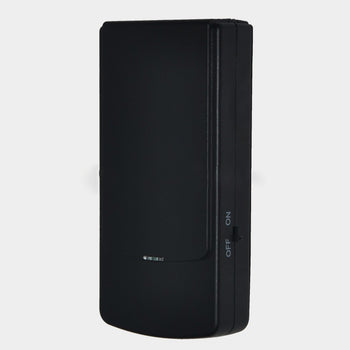10 ways your smartphone can find out where you are
The modern world is so full of technology that sometimes we don't even notice its presence. We are always surrounded by many sensors, microchips and other little things that participate in our lives. And one type of them is a combination of passive and active tracking technologies that you should be aware of.
Number 1: GPS
GPS technology is commonly used for navigation and tracking purposes. It is a satellite positioning system used by the United States. Together with other satellite navigation systems like Russian GLONASS, European Galileo, Chinese Compass and Japanese QZSS (Quasi-Zenith Satellite System), it is a powerful tool for accurate outdoor tracking (up to 1 centimeter ), but it loses its magical power indoors and sometimes even in large cities.
Number 2: Assisted GPS
Assisted GPS, or A-GPS, is the advanced version of GPS tracking. It is used to make GPS navigation much faster. The main principle of this system is to use the triangulation of cell towers to determine the location of the smartphone in a given area, and then use GPS satellites to determine it more precisely in this area.
Number 3: Synthetic GPS
This technology can be considered as the variation of A-GPS which is also used to speed up location finding, but it cannot improve location tracking accuracy. Using a mobile phone or wireless Internet network, this system sends data about future satellite locations and stores it in the cache of the smartphone. Using this data, your smartphone will determine the location in about 2 seconds.

Number 4: Cell ID
This technology allows mobile operators to determine the location of your smartphone even without a GPS module. This system uses the identifiers of your smartphone and the cell phone towers around it to determine its location between three or more towers around it. Although it is not as accurate as GPS in open areas, in urban settings it can give even more accuracy than GPS tracking as there are many short range cell towers in the city and navigation GPS has a weaker signal.
Number 5: Wi-Fi
The same can be done using a Wi-Fi connection. In fact, Wi-Fi can track your location in two ways. The first is called RSSI. It uses Wi-Fi hotspots and their database to track your location between them (like Cell ID technology with cell towers) with tens of meters of accuracy. The second way is called wireless fingerprint. It fingerprints a certain location, recording your location there on the first visit. When you return there, the system will recognize you and can determine your position within a few meters of accuracy.
Number 6: Inertial sensors
Every smartphone probably has these sensors inside: magnetometer (or compass), accelerometer and gyroscope. The compass can determine the direction of your movement, the accelerometer measures your speed, and the gyroscope monitors your turning actions. Although they can only work for a few minutes, in combination with other tracking systems they can be very handy. For example, when you are going through the tunnel, ordinary tracking systems cannot reach you and while you are there, your position will be tracked by these sensors until you exit the tunnel where the GPS tracker will pick you up.
Number 7: Barometer
While this tool isn't very useful on its own, with some calibration and previously downloaded local weather data, it can determine the elevation level and even the floor you're on quite accurately. Although its data can be affected by air conditioning and heating systems, the barometer is a very useful instrument for tracking indoors with others.
Number 8: Short Range Signals
Many government facilities and other high security sites use badges with RFID chips and hundreds of sensors inside buildings to determine where a specific person is. The other short-range signal technology that has become prevalent these days is NFC (near field communications). It's built into many different smartphones and used not only for payments, but also to help indoor tracking become even more accurate.
Number 9: Bluetooth Beacons
Some retail stores have started using this technology to know precisely where the customer is and what goods they are interested in. The accuracy of this tracking system is 10 centimeters. Its work is similar to Wi-Fi fingerprinting, but it uses the Bluetooth beacon network across the store and your smartphone's Bluetooth 4.0 connection to locate you inside the store.
Number 10: Terrestrial Transmitters
I guess that's a real future of tracking. Companies like Locata and NextNav have already started developing it. They will use a combination of GPS satellites with ground-based transmitters that will allow accurate 2-inch tracking both outdoors and indoors. Locata's technology uses a 2.4 GHz frequency band (the same as Wi-Fi and Bluetooth) and NextNav's technology relies on the 900 MHz band used by many modern cell phones and they plan to build a ringing of their transmitters in each city.
Impressed?
So you can clearly see that tracking technologies are developing very rapidly and soon there will be no place where you cannot be found. There is always a way to secure your location, even from these advanced tracking technologies. Wherever you are, you can prevent your smartphone from discovering your location with a cell phone jammer.













